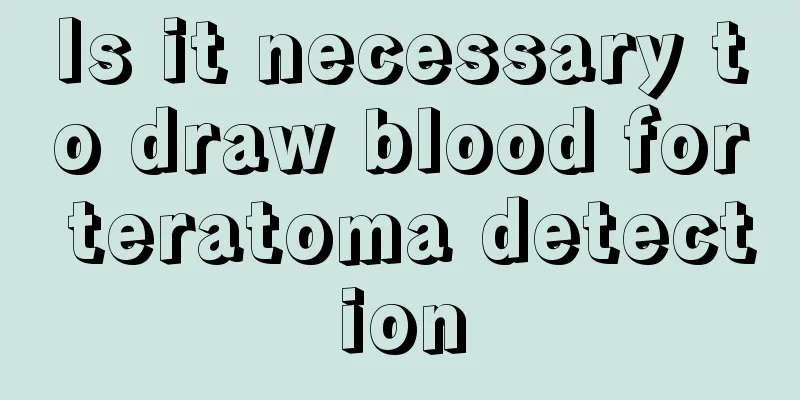What is the process of blood circulation in the heart?

|
The heart is an important organ in the body, and the blood circulation in the heart is also related to the health of the body. If the blood circulation is slow, abnormalities will occur in the body. You can learn about the heart's blood circulation process or direction through the following introduction. Heart blood circulation process The cardiovascular system mainly includes the heart, arteries, capillaries and veins. The cardiovascular system is a completely closed system, and the heart is the engine of the system. The heart is a hollow muscular organ that contracts and relaxes regularly, constantly sucking in and pushing out blood, ensuring that the blood flows forward in one direction along the blood vessels. Blood vessels are tubes that transport blood, including arteries, veins, and capillaries. Arteries originate from the heart, branch repeatedly, and their diameter gradually becomes smaller and their number gradually increases. Finally, they are distributed to tissues throughout the body and become capillaries. Capillaries are network-like and are where the exchange of substances between blood and tissues takes place. Capillaries gradually merge into veins, small veins merge into large veins, and finally return to the heart, completing the blood circulation. Types of heart blood circulation The blood circulation in our body can be divided into two parts: small circulation and pulmonary circulation according to their circulation parts. 1. Systemic circulation (macrocirculation) The blood vessels of the systemic circulation include the aorta and its branches that originate from the left ventricle of the heart, as well as the superior vena cava, inferior vena cava, coronary sinus and their branches that return to the heart. The blood from the left ventricle is ejected into the aorta, along the arteries to the capillaries throughout the body, then merges into the small veins and large veins, and finally returns to the right atrium through the superior vena cava and inferior vena cava. The systemic venous circulation can be divided into three major systems: the superior vena cava system, the inferior vena cava system (including the portal vein system) and the cardiac venous system. The superior vena cava system is a channel that collects venous blood from the head, neck, upper limbs, chest and back and returns it to the heart; the inferior vena cava system is a series of channels that collect venous blood from the abdomen, pelvis and lower limbs and returns it to the heart; the cardiac venous system is a channel that collects venous blood from the heart. Venous blood return to the heart from lower extremities 2. Pulmonary circulation (small circulation) The pulmonary circulation in our body mainly includes pulmonary artery circulation and pulmonary venous circulation. The blood in the pulmonary artery is mainly venous blood. The blood in the right ventricle of the heart reaches the pulmonary capillaries through the pulmonary artery, where it exchanges gases with the gases in the alveoli, expelling carbon dioxide and inhaling oxygen. The blood then turns into bright red arterial blood and returns to the left atrium through the pulmonary veins. The pulmonary veins are the only veins in the body that carry oxygen-rich blood. The body's neural regulation of cardiovascular activity is achieved through various cardiovascular reflexes. The efferent nerves that innervate the heart are the sympathetic nerves of the sympathetic nervous system and the vagus nerves of the parasympathetic nervous system. 3. Coronary circulation (small circulation) The purpose of coronary circulation is to supply the heart with the nutrients and oxygen it needs and to carry away waste products. It is a circulation in which blood flows directly from the coronary artery at the base of the aorta to the capillary network inside the myocardium and finally flows back to the right atrium through the veins. Blood circulation route Blood circulation is divided into systemic circulation and pulmonary circulation Pulmonary circulation Right ventricle -- pulmonary artery -- capillary network in the lungs -- pulmonary vein -- left atrium. Systemic circulation Left ventricle -- aorta -- capillary network throughout the body -- superior and inferior vena cava -- right atrium. Blood circulation route Left ventricle → (now arterial blood) → aorta → arteries at all levels → capillaries (substance exchange) → (substance exchange) → (after substance exchange it becomes arterial blood) → pulmonary vein → left atrium → finally returns to the left ventricle and starts a new round of circulation. Among them, the blood circulation from the left ventricle to the right ventricle is called the systemic circulation of blood, and the blood circulation from the pulmonary artery to the left atrium is called the pulmonary circulation of blood. |
<<: What should I do if I have hair loss on the top of my head?
>>: What's wrong with yellow discharge after urinating
Recommend
Is there anyone who gave birth to a daughter by washing with white vinegar?
I believe that every woman is eager to know wheth...
Analysis and treatment of the causes of osteosarcoma recurrence
After scientific treatment of osteosarcoma, we ne...
Are there many cases of osteosarcoma being cured?
Osteosarcoma is one of the types of diseases that...
How long after head surgery can I wash my hair?
Head surgery is actually very serious for everyon...
Diagnostic basis of liver cancer
Liver cancer refers to malignant tumors that occu...
The correct way to use the coarse salt hot compress pack
Coarse salt hot compress packs are very effective...
There are small bumps on the tongue
The health of the tongue is very important. Serio...
Does not urinating after drinking beer mean kidney problems?
Normally, you urinate more frequently when drinki...
What should you pay attention to when eating moldy foods to prevent liver cancer? A few things you must know to prevent liver cancer
Primary liver cancer is one of the most common ma...
Yellow and greasy tongue coating and bad breath
The tongue coating is a more conspicuous part of ...
How long does the saline vomiting method take?
In life, it is inevitable to eat spoiled or poiso...
What are the effects and uses of Fuling
Many people know that Poria cocos is often used a...
What to do if your toenails are thick? How can it be thinner?
Thickening of toenails is often related to fungal...
What should you pay attention to in your diet during late stage liver cancer? 4 things to pay attention to in your diet during late stage liver cancer
In addition to the necessary treatment, liver can...
Can honey be washed with hot water?
Many people like to drink honey water, not only b...









